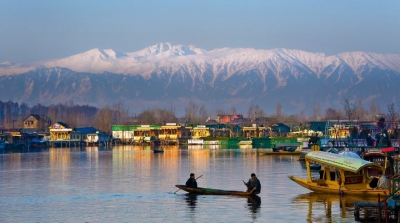
The splendid Kashmir region is a heaven on earth for its beautiful landscapes, lush green valleys, stunning multi-coloured tulip gardens, dazzling lakes, and for its uncanny resemblance with the Garden of Eden described in religious books. Therefore it acquired the name ‘Paradise on Earth’. It is resplendent with white beauty in winter and the glorious colours of nature in autumn, fall, spring and summer.
People
Although Kashmiri people live in different parts of India they are mainly settled in the Valley of Kashmir, Doda, Kishtwar and Ramban thasils of Jammu Division. Their language is highly influenced by the Sanskrit language and mostly spoken by Kashmiri Muslims and Kashmiri Hindus.
Culture
The culture of Kashmir is a blend of multiple customs and came from Northern India, Northern Pakistan and the Chinese territory of Aksai Chin. The state enjoys a mix of religions and that’s why Kashmir is famous for its cultural heritage. It merges Hindu, Sikh, Muslim and Buddhist religions which make Kashmir more beautiful by adopting their culture.
Cuisines
Kashmir has some mouth-watering vegetarian and non vegetarian cuisine. Non-vegetarian lovers have a lot to choose from. Popular dishes include Kashmiri Kebab, Rogan Josh, Yakhni, Pasanda, Syun Alu and Kheema Methi. Some famous vegetarian dishes include Haak, Rajma, Zarda, Tursh, Shree Pulao, Nadeir Yakhean and Ladyar Tsaman. These dishes are prepared with fresh vegetables and paneer to give an interesting taste.
Dress
The dress style of the Kashmiri people is very colourful and attractive. Women adorn themselves with gorgeous jewellery like nose rings, bangles, earrings, necklaces, and wear loose salwar kameez which keeps them comfortable during the hot season. Men dress in kurta pajama, shalwars, gurabi and skull caps. Pheran is an overcoat decorated with colourful patches and embroidery work and worn by Kashmiri people during winter.
Festivals
Festivals are celebrated by the Kashmiri people with joy and enthusiasm. Besides a panoramic landscape, Kashmir is home to a rich cultural heritage and it is easily reflected in the festival celebrations of the Kashmiri people. Some of the popular festivals include Baisakhi, Lohri, Eid-ul-Fitr, Hemis Festival, Tulip Festival, Shikara Festival, Gurez Festival, Sindu Darshan and Domoche Festival. A large number of people gather during the festive season to enjoy these auspicious days.
Dance and music
Almost every festival and fair in Kashmir has dance and music that are a big attraction for tourists. One of the popular dance forms is the mask dance performed during the Hemis Festival. Dancers wear colourful costumes, face masks and brocade robes. Other major dance forms are Chakri, Ladishah, Rouf dance and Dandaras, Roul, Dogri and Wuegi Nachun are some forms of folk dance.
The Kashmiri people love folk music and tap their feet to the most famous Rabab music. The common instruments played in this type of music are Sitar, Dukra and Nagara. Wanawun, Ghazals, Sufi and Choral are some major music forms in Kashmir performed during wedding ceremonies and festivals.
Handicrafts
Kashmir is popular for beautiful and unique handicrafts. The pashmina shawl is famous worldwide for its quality and fabric. Symbolizing royalty, the design and embroidery work on the shawl is breathtaking and the warmth and softness that it offers is completely matchless. Kashmir is also famous for hand-knotted carpets and woollen rugs with floral designs.
Basketry, paper mache, carved wooden furniture made of walnut wood, and silverware are some of the best handicrafts found in Kashmir. As Kashmir is a major tourist attraction, the handicraft industry is being expanded by the government.
Occupations
Kashmiris are chiefly involved in agriculture, and popular cultivated items include rice, maize, mustard, cotton seed, radish, onions, gourd, lotus stalk, linseed, carrots, etc. The climatic condition of Kashmir helps in the cultivation of fruits like plums, apples, cherries, apricots, mulberry, grapes, walnuts, almonds, etc. Agricultural exports and exports of handicrafts, shawls and rugs bring the state a handsome amount of foreign exchange.
Flora and fauna
Kashmir is referred to as a beauty spot of the medicinal and herbaceous flora in the Himalayas. There are hundreds of different species of wild flowers recorded in the alpine meadows of the region. The botanical garden and the tulip gardens of the Zabarwan Park grow 300 breeds of flora and 60 varieties of tulips. This is considered the largest tulip garden of Asia. Kashmir is home to rare species of animals, many of which are protected by sanctuaries and reserves.
Srinagar
Srinagar is the largest city and the summer capital of Jammu and Kashmir. It lies in the Kashmir Valley on the banks of the Jhelum River, a tributary of the Indus, and Dal and Anchar lakes. The city is known for its natural environment, gardens, waterfronts and houseboats.
Kashmir Intellectuals
The beautiful land of Kashmir has been the seat of many schools of Indian philosophy since thousands of years. Over time, these various systems integrated themselves into what is now identified as the ‘Kashmiri School of Shaiva Philosophy’.
Credit : C. Jospeh (The Teenager Today)
Picture Credit : Google




